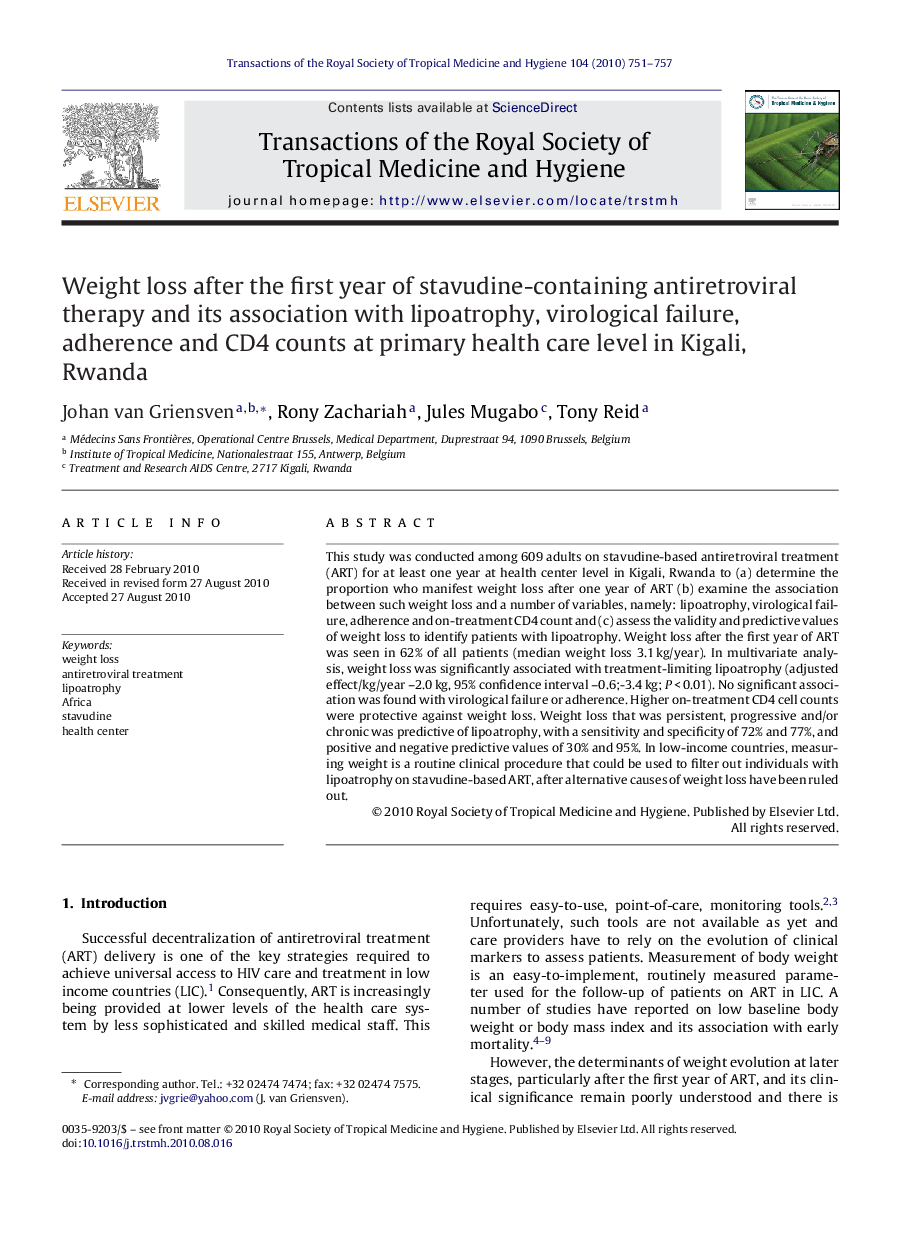| Article ID | Journal | Published Year | Pages | File Type |
|---|---|---|---|---|
| 3420547 | Transactions of the Royal Society of Tropical Medicine and Hygiene | 2010 | 7 Pages |
SummaryThis study was conducted among 609 adults on stavudine-based antiretroviral treatment (ART) for at least one year at health center level in Kigali, Rwanda to (a) determine the proportion who manifest weight loss after one year of ART (b) examine the association between such weight loss and a number of variables, namely: lipoatrophy, virological failure, adherence and on-treatment CD4 count and (c) assess the validity and predictive values of weight loss to identify patients with lipoatrophy. Weight loss after the first year of ART was seen in 62% of all patients (median weight loss 3.1 kg/year). In multivariate analysis, weight loss was significantly associated with treatment-limiting lipoatrophy (adjusted effect/kg/year –2.0 kg, 95% confidence interval –0.6;-3.4 kg; P < 0.01). No significant association was found with virological failure or adherence. Higher on-treatment CD4 cell counts were protective against weight loss. Weight loss that was persistent, progressive and/or chronic was predictive of lipoatrophy, with a sensitivity and specificity of 72% and 77%, and positive and negative predictive values of 30% and 95%. In low-income countries, measuring weight is a routine clinical procedure that could be used to filter out individuals with lipoatrophy on stavudine-based ART, after alternative causes of weight loss have been ruled out.
